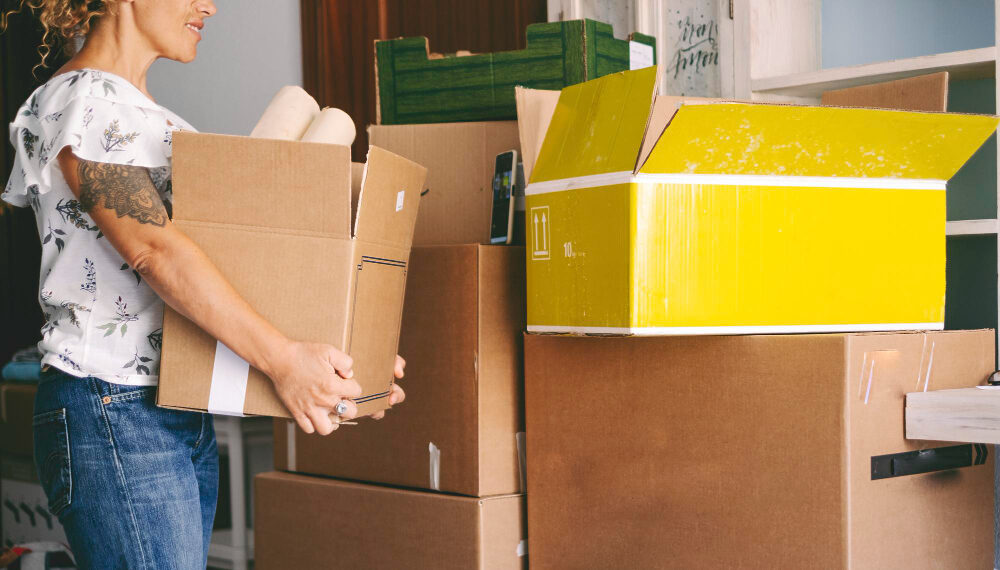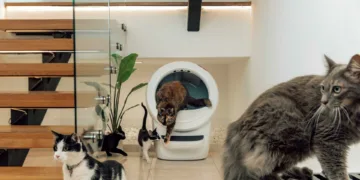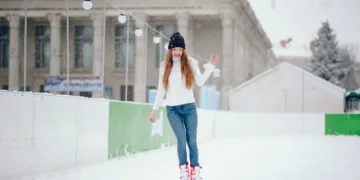Vilnius changes fast: new jobs, fresh apartments, expanding families, a steady flow of students and entrepreneurs. All that movement creates an everyday problem—where to put things when life won’t sit still. Whether you’re renovating a flat in Naujamiestis, downsizing from a house in Antakalnis, or running an online shop out of your living room, rental storage in Vilnius can be the extra room you wish your home already had. This guide—written from the perspective of a local storage operator—aims to help you choose wisely, keep costs down, and store with confidence without turning your weekends into logistics marathons.
Why rental storage in Vilnius is surging
City living squeezes space. Basements aren’t always dry, cellars rarely feel secure, and balconies fill up with skis, bikes, and camping gear by November. Add in a thriving renovation culture and a growing e-commerce scene, and rental storage in Vilnius becomes a practical tool rather than a luxury. Modern facilities solve three problems at once: predictable access, reliable protection from weather, and professional security. For households, that means a calmer home. For businesses and creators, it’s a flexible “annex”—no long lease, no surprise utility bills, just usable square meters when you need them.
How to choose rental storage in Vilnius – a simple checklist
Choosing a unit is easier when you focus on a few essentials. If you get these right, the rest falls into place.
Location and access – don’t waste time in traffic
Start with a map, not a price list. If you’ll visit once a month, you can prioritize features. If you’ll be in and out weekly—restocking inventory, grabbing event gear—shorter travel time matters more than shaving a few euros off the monthly rate. Check access hours: some sites are truly 24/7 with keypads or cards; others offer extended daytime hours. Early-morning gym people, night-owl designers, and weekend movers all care about this detail more than they expect.
Size and layout – think vertical, not just floor area
Unit sizes are often listed in square meters, but volume is what you’ll actually use. Two tricks help you rent smaller and smarter: uniform boxes that stack neatly, and simple shelving to keep heavy items off the floor. Rough guide:
• 1–2 m²: seasonal clothes, a few boxes, sports gear;
• 3–5 m²: studio or one-bedroom contents;
• 6–10 m²: a two-bedroom flat;
• 10 m²+: furniture sets, business stock, bulky equipment.
If you’re unsure, bring a quick item list or a few photos on your phone and ask to see units in person; a five-minute walk-through beats guesswork.
Security essentials – layers beat promises
Good security is layered, not just a single camera at the door. Look for controlled entry (individual PINs or key cards), corridor and entrance CCTV, good lighting, and solid fittings for your own high-quality lock. Ask how activity is monitored and how incidents are handled. If the staff can show you, not just tell you, you’re in safe territory.
Climate and building type – match the space to your stuff
Vilnius winters are cold and summers can be humid. For delicate items—musical instruments, electronics, paper archives—consider indoor units with stable conditions. For sturdier things such as tools or patio furniture, standard units usually do the job. If you’re storing soft furnishings for months, elevate them off the floor and use breathable covers rather than plastic wraps that trap moisture.
Contracts and flexibility – plan for change
Moves get delayed, renovations overrun, businesses scale up and down. Favor clear, month-to-month terms with simple notice periods. The ability to switch sizes without penalties is often worth more than a small introductory discount.
Support and equipment – small details, big difference
Wide corridors, lifts, loading bays protected from rain, and free trolleys transform a stressful day into a quick visit. If you’re moving solo, those details matter. If you’re running a shop, ask about parcel deliveries to your unit or on-site packaging supplies.
Costs and value – what drives the price of rental storage in Vilnius
Price is a function of size, location, access, and features. Value is how much hassle and risk it removes. To keep costs sensible:
- Right-size before you rent: Sell or donate items you won’t use next season. Many customers drop a unit size after an honest afternoon of sorting.
- Use vertical space: A few freestanding shelves can turn 3 m² into the equivalent of 5–6 m² of usable storage.
- Share smartly: Housemates, neighbors, or micro-business partners sometimes split a larger unit and rotate access. Set simple ground rules and label clearly.
- Match features to contents: Don’t pay for climate control if you’re storing garden tools; do pay if you’re storing archival documents or high-end electronics.
- Lock in only what helps: Longer commitments may lower unit cost, but if your timeline is unclear, flexibility is cheaper than paying for months you don’t need.
Remember the hidden cost of poor storage: damp surprises, broken items, or time lost digging for a single cable. A well-run facility often saves more than it costs.
Who benefits most from rental storage in Vilnius?
Households in transition
Renovating a kitchen? Put appliances and cupboards out of harm’s way and keep rooms workable. Between leases? Use a unit to decouple moving dates so you’re not forced into one exhausting weekend. Growing family? Rotate seasonal items—strollers, sleds, summer gear—so corridors and balconies stay clear.
Students and expats
If you’re leaving Vilnius for the summer or a semester abroad, a compact unit is more practical than bouncing boxes between friends’ flats. International professionals doing project work can keep personal items, winter kit, and documents in the city without paying for a larger apartment year-round.
Creators and small businesses
Photographers, DJs, and artists store backdrops, lights, and equipment so home stays livable. E-commerce sellers use storage as a mini-warehouse: shelves for fast-moving stock, bins for returns, a simple packing station. Tradespeople park rarely used tools and materials in a secure unit instead of cluttering a van. The bonus: a physical boundary between work and home reduces stress and errors.
Practical packing tactics for Vilnius conditions
- Standardize boxes: Use sturdy, uniform sizes that stack safely; half-filled boxes collapse and slow you down.
- Label three sides: Include room or category, contents, and urgency (e.g., “Open first: bedding”).
- Create an aisle: Shelves along the sides with a walkway down the middle mean quick five-minute visits instead of afternoon expeditions.
- Moisture savvy: Elevate boxes on pallets in non-climate units. Use breathable covers for furniture and add moisture absorbers for long stays.
- Electronics and instruments: Remove batteries, store in padded boxes, and avoid extreme temperature swings when possible.
- Furniture hacks: Disassemble large items; tape screws and fittings in labeled bags to the underside. Use blankets rather than cling film for natural wood.
- Photo inventory: Snap pictures of box contents before sealing; a shared note helps families or teams find things without a trip.
- Front-of-unit zone: Keep a small “grab-and-go” area near the door for luggage, sports gear, or frequently needed business supplies.
What belongs—and what doesn’t
Good candidates: seasonal clothing, skis and bikes, camping gear, books and vinyl, household goods, furniture, tools, business inventory, exhibition materials.
Better elsewhere: irreplaceable jewelry or critical personal documents may be safer in a bank box.
Typically prohibited: perishables, plants, animals, illegal items, flammables, and explosives. If you’re unsure about an item, ask before you pack.
Step-by-step: renting rental storage in Vilnius without the headaches
- Define the job: Short bridge during a move, or long-term space optimization? The purpose dictates size and features.
- Make a quick inventory: Count large items and estimate boxes; this prevents over-renting.
- Visit facilities: Assess cleanliness, lighting, signage, and how staff answer questions. Try the trolley route from the entrance to a demo unit.
- Pick size and position: Ground floor is convenient; upper floors may be more economical if there’s a lift. Corner units can fit awkward furniture.
- Review the agreement: Look for clear access hours, notice periods, insurance terms, and any deposits or admin fees.
- Gather materials: Boxes, tape, markers, bubble wrap, blankets, pallet boards if needed.
- Move smart: Heavy items first, lighter on top. Build shelves early to avoid reshuffling later. Keep tools and a utility knife in an “open-first” box.
- Schedule check-ins: Put a reminder in your calendar to tidy and rotate items quarterly so the unit reflects your current life, not last year’s.
Business workflows – make rental storage in Vilnius an operations upgrade
Treat your unit like a tiny, disciplined warehouse. Zone the shelving: fast-moving stock at chest height, slow-moving up top. Keep a packing station stocked with tape, labels, and a small scale. Use a simple barcode or spreadsheet to track ins and outs; consistent names (SKU, size, color) prevent mis-picks. If your facility accepts deliveries, leave clear instructions for couriers and label the inside of your door with your unit number and contact details. Consider “stock mornings” once a week so the rest of your schedule stays focused on sales and service rather than last-minute runs.
Red flags when comparing providers
- Vague answers about security: If staff can’t explain how entry is controlled or footage is reviewed, keep looking.
- Damp smells or poor lighting: Your belongings deserve better than guesswork.
- Confusing fees: Surprises around insurance, admin charges, or access hours are rarely in your favor.
- No basic equipment: A good site offers trolleys, ramps, and sensible loading access.
- Rushed or indifferent service: If your questions are a burden today, getting help later won’t be easier.
Frequently asked questions about rental storage in Vilnius
How long can I rent?
As long as you need. Many contracts run month-to-month with simple notice periods so your storage adapts to your timeline.
Can I come at night or on holidays?
Some locations are truly 24/7. Others offer long daytime hours. Choose based on how you live and work, not just on price.
Do I need insurance?
Insuring stored items is smart and sometimes required. You can often add cover via the facility or your existing policy—compare terms for what you’re storing.
Is climate control necessary?
For electronics, wooden instruments, fine art, or important archives, stable conditions are a wise investment. For sturdy household goods, standard units usually suffice.
Is help available for moving?
Most sites offer trolleys and can recommend partner movers or van rentals. If you’re moving alone, plan multiple light trips and pack with handling in mind.
Why people choose us—without the sales pitch
We won’t pretend storage is complicated. The best facilities are simply predictable: clean, well lit, easy to reach, and staffed by people who listen. If you’re comparing options for rental storage in Vilnius, ask to see units in person, walk the loading route, and try the entry system yourself. You’ll know within minutes whether the site fits your routine.
Our team’s approach is straightforward: understand your goal, right-size the space, and make visits painless. When your life changes—a renovation wraps, a shop grows, a baby arrives—we help you scale the unit up or down so you’re never paying for air.
The bottom line on rental storage in Vilnius
Space is a tool. Use it well and you gain calmer rooms, smoother moves, and simpler business operations. Rental storage in Vilnius isn’t a warehouse you disappear into—it’s a flexible extension of your home or company that should work as hard as you do. Choose on evidence, not hype: location and access that suit your routine, the right size arranged vertically, security you can see, and terms that follow your timeline. Pack with intention, label like a pro, keep an aisle for future-you, and review your setup a few times a year. Do that, and your unit will pay you back in saved time, fewer replacement purchases, and a home or workspace that finally breathes.
If you’d like practical, no-pressure advice—or to walk through available sizes—reach out to a local provider and ask the questions in this guide. We’ll help you compare options, avoid over-renting, and set up a space that feels like an effortless part of your day. Read more: https://www.sandeliukunuoma.lt/en/home


























